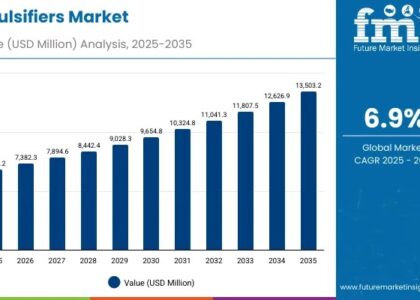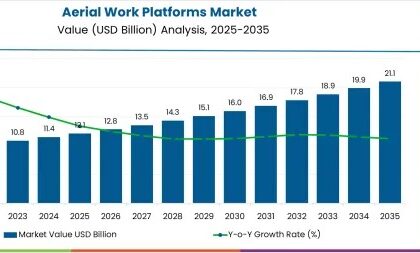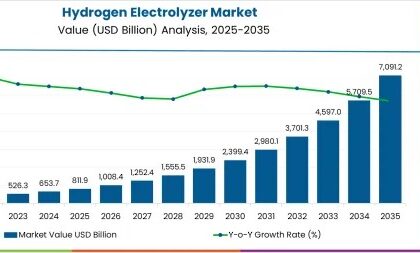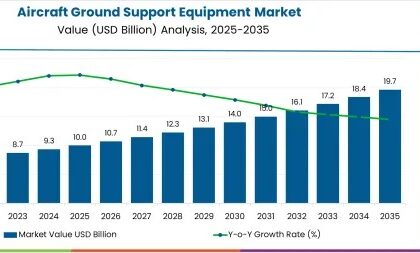According to the latest market survey conducted by Future Market Insights, the global aqueous acrylic binders market has reached a valuation of USD 2.48 billion in 2022 and is projected to expand at a CAGR of 4.3% from 2023 to 2033, eventually reaching USD 3.92 billion by the end of the forecast period. This promising growth underscores the pivotal role aqueous acrylic binders play across various industrial applications, thanks to their superior performance and eco-friendly profile.
Understanding Aqueous Acrylic Binders
Aqueous acrylic binders are water-based polymers known for their versatility, environmental compatibility, and superior adhesion properties. These binders are widely used in paints, coatings, adhesives, textiles, and construction materials, offering excellent durability, flexibility, and resistance to weathering. Unlike solvent-based alternatives, aqueous acrylic binders contribute to reducing volatile organic compound (VOC) emissions, aligning with global sustainability goals and environmental regulations.
Value and Growth Projections
The burgeoning adoption of aqueous acrylic binders in diverse industries is propelling market growth. As of 2022, the market is valued at USD 2.48 billion and is forecasted to climb to USD 3.92 billion by 2033, growing at a compound annual growth rate (CAGR) of 4.3%. The robust growth trajectory reflects increasing demand for sustainable solutions and advancements in polymer chemistry that enhance the performance of acrylic binders.
The market’s expansion is supported by emerging economies where urbanization and infrastructure development are driving demand for high-quality coatings, adhesives, and construction materials.
Key Takeaways
- The aqueous acrylic binders market was valued at USD 2.48 billion in 2022 and is poised to grow at a CAGR of 4.3% through 2033.
- By 2033, the market is anticipated to achieve a valuation of USD 3.92 billion, driven by sustainable innovation and regulatory mandates.
- Increasing adoption in paints and coatings for residential and commercial applications is a major growth driver.
- Rapid urbanization and infrastructure investments in Asia-Pacific and Latin America are creating lucrative opportunities for manufacturers.
Prominent Drivers of Aqueous Acrylic Binders
- Sustainability and Regulatory Compliance: Growing environmental awareness and stringent regulations on VOC emissions have accelerated the shift from solvent-based to water-based binders. Aqueous acrylic binders are well-positioned to meet these demands, offering an eco-friendly alternative without compromising performance.
- Expanding Construction Sector: The global construction boom, particularly in developing regions, is driving the demand for advanced coatings and adhesives, where aqueous acrylic binders are key components. Their properties, including excellent adhesion and resistance to weathering, make them indispensable in construction applications.
- Advancements in Material Science: Ongoing research and development are leading to innovations in binder formulations, improving their application versatility and durability, further boosting their appeal in industrial applications.
Key Companies Profiled
BASF; DOW Chemicals; Polímeros y Sistemas de Aplicación Tecnica S.L.; Scott Bader Group; Omnova Solutions; Arkema Inc.; Tanatex Chemicals; Achitex Minerva Spa; Neochem Technologies; Other Key Players
Trends and Restraints Assessment
Emerging Trends
- High-Performance Applications: The development of enhanced aqueous acrylic binders with superior resistance to chemicals, UV exposure, and abrasion is expanding their usability in niche markets, including aerospace and automotive sectors.
- Circular Economy: Manufacturers are exploring bio-based raw materials for binder production, reinforcing the industry’s commitment to sustainability and the circular economy.
- Smart Coatings: Aqueous acrylic binders are being integrated into smart coating technologies, offering functionalities such as self-cleaning, corrosion resistance, and thermal insulation.
Restraints
- High Production Costs: The reliance on advanced raw materials and processing technologies can lead to higher production costs, potentially limiting market penetration in price-sensitive regions.
- Performance Limitations: While aqueous acrylic binders offer impressive properties, they may not always match the performance of solvent-based binders in extreme environments, posing challenges in specific industrial applications.
Market Segmentation
By Application:
- Pulp & Paper
- Paint Emulsions
- Construction Chemicals
- Textiles Processing
- Leather Processing
- Home Care
- Hygiene
- Others
By Region:
- North America
- Latin America
- Europe
- South Asia Pacific
- East Asia
- Middle East & Africa (MEA)
About Future Market Insights (FMI)
Future Market Insights, Inc. (ESOMAR certified, recipient of the Stevie Award, and a member of the Greater New York Chamber of Commerce) offers profound insights into the driving factors that are boosting demand in the market. FMI stands as the leading global provider of market intelligence, advisory services, consulting, and events for the Packaging, Food and Beverage, Consumer Technology, Healthcare, Industrial, and Chemicals markets. With a vast team of over 400 analysts worldwide, FMI provides global, regional, and local expertise on diverse domains and industry trends across more than 110 countries. Join us as we commemorate 10 years of delivering trusted market insights. Reflecting on a decade of achievements, we continue to lead with integrity, innovation, and expertise.
Contact Us:
Future Market Insights Inc.
Christiana Corporate, 200 Continental Drive,
Suite 401, Newark, Delaware – 19713, USA
T: +1-347-918-3531
For Sales Enquiries: sales@futuremarketinsights.com
Website: https://www.futuremarketinsights.com
LinkedIn| Twitter| Blogs | YouTube






